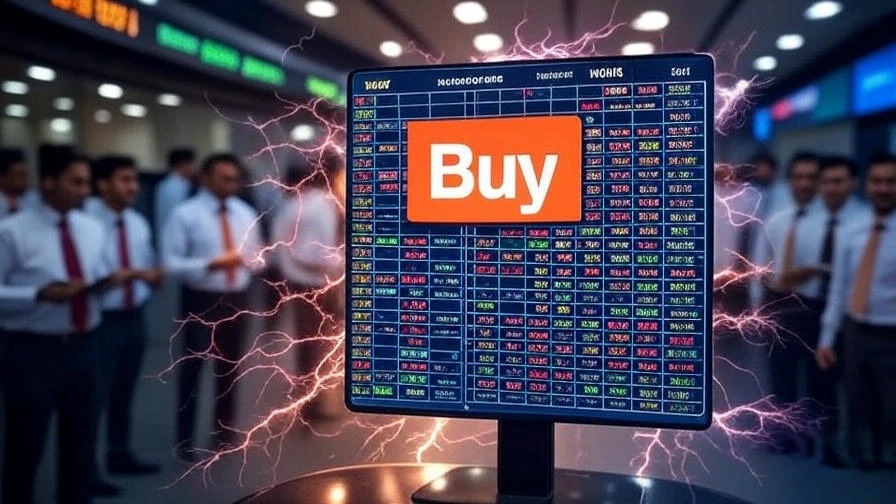
The Indian Energy Exchange continues its impressive run, but smart investors need to look beyond the headlines
If you’ve been tracking the Indian stock market lately, you’ve probably noticed Indian Energy Exchange (IEX) making some serious noise. The stock recently jumped over 4% after announcing stellar electricity trading volumes, and its five-year journey reads like a wealth creation story – delivering a whopping 281% returns to patient investors.
But here’s the million-dollar question: Is this energy stock still a buy, or are we looking at a classic case of “buy the rumor, sell the news”? I’ve learned that the most interesting stories often lie beneath the surface numbers.
The Power Behind IEX’s Impressive Rally

Let’s start with what’s driving all this excitement. IEX isn’t just another utility stock – it’s India’s leading energy trading platform, and the numbers are genuinely impressive.
The company recently reported a robust 14% year-on-year growth in electricity traded volume, reaching 10,946 million units in May 2025. Even more striking is their Real-Time Market performance, which hit its highest-ever monthly volume of 4,770 million units – a massive 42% jump from last year.
Think of IEX as the stock exchange for electricity. Just like how BSE and NSE facilitate stock trading, IEX provides the platform where power producers sell electricity to distribution companies, industrial consumers, and traders. With over 7,900 participants and an commanding 84% market share, they’re clearly the dominant player in this space.
The renewable energy story adds another layer of excitement. Trading in Renewable Energy Certificates surged 65% year-on-year, while their Green Market grew by 47%. This isn’t just about current performance – it’s positioning IEX perfectly for India’s ambitious renewable energy transition.
What the Smart Money is Saying
Leading brokerages are clearly bullish on IEX’s prospects. JM Financial recently initiated coverage with a ‘Buy’ rating and a target price of ₹231 per share, suggesting a 14% upside potential. They’re projecting volume growth at a 13% CAGR through FY28, which should drive revenue growth at 16% CAGR.
Antique Stock Broking is even more optimistic, maintaining a ‘Buy’ rating with a ₹254 target price. They’re modeling 17% annual volume growth over the next couple of years, backed by IEX’s strong balance sheet showing a net cash position of ₹1,000 crore and an impressive 40% Return on Equity.
From a technical perspective, the stock has broken out of a 22-week double bottom pattern at ₹191 and is now eyeing the major resistance level at ₹229. For traders, this suggests the bullish momentum could continue as long as it stays above the breakout zone.

The Growth Runway Ahead
What makes IEX particularly interesting is the multiple growth drivers on the horizon. The company is preparing to launch electricity derivatives, which could significantly expand their addressable market by attracting more sophisticated participants.
The recent SEBI approval for electricity derivatives contracts through MCX validates the broader electricity trading ecosystem, even though IEX remains the primary platform for physical delivery. This development could enhance price discovery and bring more institutional participation to the market.
Looking ahead, IEX is exploring opportunities like the Green Real-Time Market product and potential international expansions through Carbon and Coal exchanges. With renewable power’s share expected to grow from 44% to 60% by FY30, IEX is well-positioned to capture this transition.
The Other Side of the Coin
However, experienced investors know that every compelling story has potential challenges, and IEX is no exception.
The most immediate concern is the declining market clearing prices. Despite higher volumes, the Day Ahead Market clearing price fell 22% year-on-year to ₹4.12 per unit in May 2025. The Real-Time Market prices dropped even more sharply by 28% to ₹3.43 per unit. While this benefits consumers, it could pressure IEX’s revenue per unit of electricity traded.
Additionally, the Day Ahead Market – a key segment for IEX – saw volumes decline by 20% from May 2024 levels. While other segments like RTM and RECs compensated for this decline, it’s still a trend worth monitoring.
Perhaps the biggest long-term uncertainty is the regulatory overhang around “market coupling.” Regulators are exploring ways to centralize power scheduling and dispatch to optimize resource allocation, potentially challenging IEX’s dominant market position. While analysts believe significant changes aren’t imminent, this remains a policy risk that could reshape the entire market structure.

The Competitive Landscape is Evolving
The power trading ecosystem is becoming more sophisticated. With SEBI’s approval for MCX to offer cash-settled electricity derivatives, we’re seeing the emergence of new trading instruments. While IEX focuses on physical delivery and MCX on financial contracts, this evolution could create a more complex competitive environment over time.
Making Sense of the Valuation
At current levels, IEX is trading near its historical average of 32 times FY27 estimated earnings. For a company growing at double-digit rates with strong competitive moats and significant cash reserves, this valuation seems reasonable, though not exactly cheap.
The stock’s impressive track record – 71% gains over two years and 16% year-to-date returns – reflects strong investor confidence. However, it also means much of the good news may already be priced in.

The Bottom Line
IEX represents a compelling play on India’s energy transition and growing power demand. The company’s dominant market position, strong financials, and multiple growth drivers make it an interesting long-term investment proposition.
However, investors should be aware of the challenges: declining clearing prices, regulatory uncertainties around market coupling, and the evolving competitive landscape. The stock’s strong performance also means valuations aren’t exactly bargain basement levels.
For those considering IEX, it might make sense to watch for any weakness or consolidation phases to build positions gradually rather than chasing the current momentum.
After all, I’ve learned that the best investment opportunities often come to those who combine patience with thorough analysis.
Disclaimer: This analysis is for informational purposes only and should not be construed as investment advice. The author has no position in IEX stock. Investing in the stock market involves significant risks, and past performance doesn’t guarantee future results. Readers are strongly advised to conduct their own research and consult with certified financial advisors before making investment decisions.

